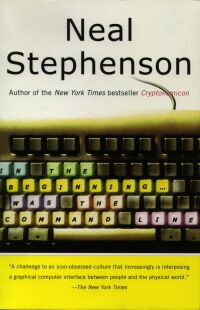Fire forskellige operativsystemer: Hvilken bil vil du have?

Som Neal Stephenson skriver i sit essay In the Beginning was the Command Line:
Imagine a crossroads where four competing auto dealerships are situated. One of them (Microsoft) is much, much bigger than the others. It started out years ago selling three-speed bicycles (MS-DOS); these were not perfect, but they worked, and when they broke you could easily fix them.Og det siger jo så noget om reklamens magt, at det også i 1999, da Stephenson skrev sit essay, var den kolossale station wagon og den chikke euro-sedan der rendte med hele markedsandelen - BeOS er jo i øvrigt død i dag.
There was a competing bicycle dealership next door (Apple) that one day began selling motorized vehicles--expensive but attractively styled cars with their innards hermetically sealed, so that how they worked was something of a mystery.
The big dealership responded by rushing a moped upgrade kit (the original Windows) onto the market. This was a Rube Goldberg contraption that, when bolted onto a three-speed bicycle, enabled it to keep up, just barely, with Apple-cars. The users had to wear goggles and were always picking bugs out of their teeth while Apple owners sped along in hermetically sealed comfort, sneering out the windows. But the Micro-mopeds were cheap, and easy to fix compared with the Apple-cars, and their market share waxed.
Eventually the big dealership came out with a full-fledged car: a colossal station wagon (Windows 95). It had all the aesthetic appeal of a Soviet worker housing block, it leaked oil and blew gaskets, and it was an enormous success. A little later, they also came out with a hulking off-road vehicle intended for industrial users (Windows NT) which was no more beautiful than the station wagon, and only a little more reliable.
Since then there has been a lot of noise and shouting, but little has changed. The smaller dealership continues to sell sleek Euro-styled sedans and to spend a lot of money on advertising campaigns. They have had GOING OUT OF BUSINESS! signs taped up in their windows for so long that they have gotten all yellow and curly. The big one keeps making bigger and bigger station wagons and ORVs.
On the other side of the road are two competitors that have come along more recently.
One of them (Be, Inc.) is selling fully operational Batmobiles (the BeOS). They are more beautiful and stylish even than the Euro-sedans, better designed, more technologically advanced, and at least as reliable as anything else on the market--and yet cheaper than the others.
With one exception, that is: Linux, which is right next door, and which is not a business at all. It's a bunch of RVs, yurts, tepees, and geodesic domes set up in a field and organized by consensus. The people who live there are making tanks. These are not old-fashioned, cast-iron Soviet tanks; these are more like the M1 tanks of the U.S. Army, made of space-age materials and jammed with sophisticated technology from one end to the other. But they are better than Army tanks. They've been modified in such a way that they never, ever break down, are light and maneuverable enough to use on ordinary streets, and use no more fuel than a subcompact car. These tanks are being cranked out, on the spot, at a terrific pace, and a vast number of them are lined up along the edge of the road with keys in the ignition. Anyone who wants can simply climb into one and drive it away for free.
Stephensons essay kan også findes her, i et lidt mere venligt format, og i øvrigt også her.'
Her, på Garett Birkels hjemmeside hos Braindead Monkeys, kan man finde en annoteret version, der forklarer lidt om, hvilke ting har ændret sig siden 1999 (og hvilke, der ikke har).
